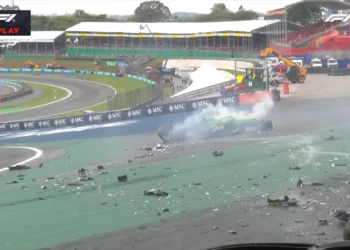McLaren’s Strategic Advantage: How They’re Dodging Mercedes’ F1 Engine Failures
The F1 season is heating up, and so are the engines on the track. With the recent string of Mercedes power unit failures causing chaos at the Canadian Grand Prix, teams are on high alert. But amidst the smoke and mirrors of engine malfunctions, one team seems to have a force field protecting them – McLaren.
As Mercedes engines faltered at Imola, Monaco, and Spain, McLaren remained unscathed. The burning question on everyone’s lips: How is McLaren bypassing the Mercedes meltdown?
Rumors swirling in the paddock suggest that McLaren’s unique power unit installation might be the secret sauce. Their MCL39 boasts a sleek rear design and smaller heat dissipation vents, setting them apart from the pack. While Mercedes pushes their power units to the limit, McLaren opts for a more conservative approach, focusing on aerodynamics and traction.
As the battle for performance intensifies, McLaren’s cautious strategy could be their ticket to success. With 14 races left in the season, managing power unit rotations will be crucial to avoid penalties. And if McLaren can maintain their competitive edge, rival teams might find themselves playing catch-up without the luxury of car upgrades.
In a season fraught with uncertainty, McLaren stands firm, undeterred by the engine woes plaguing their competitors. Will their calculated risk pay off in the long run? Only time will tell in this high-octane game of speed and strategy.
Stay tuned for more updates on the F1 saga as teams race towards glory and redemption on the global stage.










